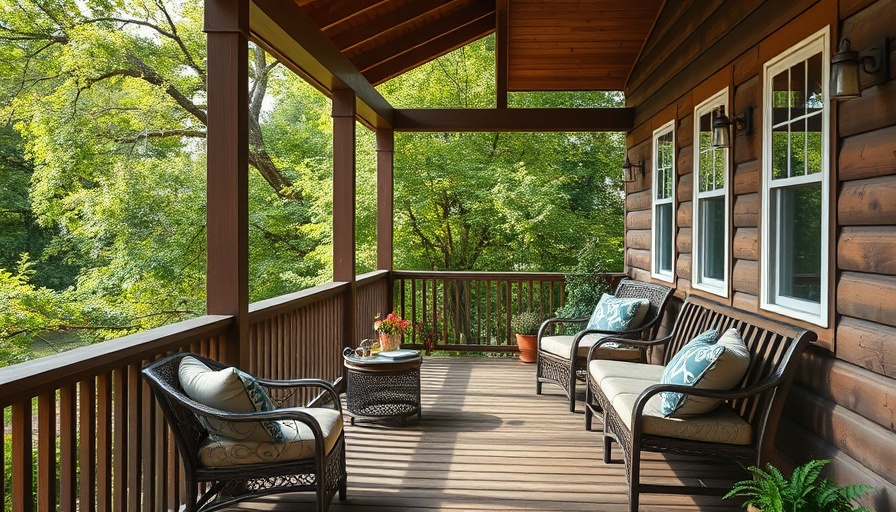
Your Ultimate Guide to a Low-Maintenance Yard
Creating a low-maintenance yard is an achievable goal for homeowners looking to enjoy their outdoor spaces without the burden of constant upkeep. By selecting the right plants, you can have a beautiful garden that thrives on its own. Here, we explore expert recommendations from landscape professionals across the country to help you curate an easy-care garden that suits your lifestyle.
Why Choosing the Right Plants Matters
When aiming for a low-maintenance landscape, the foundation lies in selecting the right plants. An expert shared, "Start with easy-care plants." For instance, trees like the swamp white oak and red maple can provide shade without requiring excessive maintenance. Similarly, shrubs such as ‘Nellie R. Stevens’ holly adapt well to various soil conditions, making them an ideal choice.
Top Plant Picks for Ease and Aesthetic
Here are some standout plant recommendations from landscape experts that can thrive across various regions, especially in California homes:
- Swamp White Oak (Quercus bicolor): A hardy tree, this oak prefers zones 3 to 8 and grows well in both dry and wet soils.
- Red Maple (Acer rubrum): Thriving in zones 3 to 9, this tree is not only low-maintenance but also adds stunning fall color to any yard.
- Nellie R. Stevens Holly: This versatile shrub (zones 6 to 9) adapts to various gardening conditions, making it an excellent choice for diverse landscapes.
- Virginia Sweetspire (Itea virginica): A beauty when in bloom, this shrub tolerates a range of environments and is celebrated for its resilience.
- Hot Lips Pink Turtlehead (Chelone lyonii ‘Hot Lips’): A unique perennial that thrives in zones 4 to 9, featuring lovely blooms that attract pollinators.
- October Skies Aromatic Aster (Symphyotrichum oblongifolium ‘October Skies’): A treat for fall gardens, this aster flourishes in zones 3 to 9 and requires minimal care.
- Blue Ice Bluestar (Amsonia ‘Blue Ice’): Great for hardiness, this option is adaptable to zones 4 to 9, offering attractive foliage throughout the growing season.
The Importance of Climate & Soil in Plant Selection
Before diving into planting, it’s vital to assess your local climate and soil conditions. Homes in California, for instance, may need to uniquely address drought conditions, steering towards drought-resistant varieties. Many native Californian plants provide low-maintenance benefits while enhancing local biodiversity. Factors like local pests and diseases also play a significant role in the success of plants.
Pitfalls: What to Avoid in Your Low-Maintenance Garden
While selecting plants is essential, knowing what to avoid can be equally critical in maintaining a low-care landscape. Landscape professionals warn against planting species listed as invasive in your area. These plants can spread quickly, overwhelming your garden and disrupting local ecosystems.
Implementing Your Vision: Practical Tips
Now that you have your plant picks, consider these actionable tips for your low-maintenance garden:
- Plan Your Layout: Before planting, sketch your garden ideas and determine where each plant will go based on their sun, shade, and moisture preferences.
- Mulch: Adding mulch around your plants can help retain soil moisture and reduce weeds, ultimately making maintenance easier.
- Install Drip Irrigation: If feasible, a drip irrigation system can automate watering, further reducing your efforts and conserving water.
Embracing Nature: The Joy of Low-Maintenance Gardening
Gardening, particularly with low-maintenance plants, offers more freedom to connect with nature and enjoy outdoor spaces. As homeowners cultivate their gardens, they often find joy in learning about plants and the environment. An opportunity arises not only to beautify their surroundings but also to contribute positively to local wildlife, creating minimal impact landscapes that are sustainable and vibrant.
As you explore the prospects of a low-maintenance yard, remember that the plants you choose will define your experience. Embrace the advice from experts, understand your local conditions, and make informed decisions for a beautiful, effortless garden.
 Add Row
Add Row  Add
Add 




 Add Row
Add Row  Add
Add 

Write A Comment